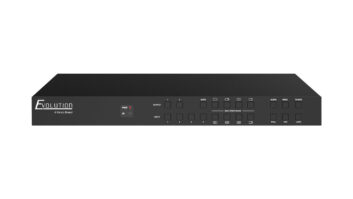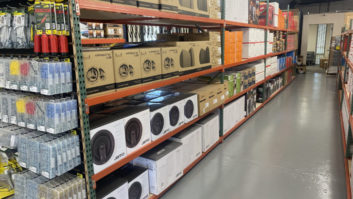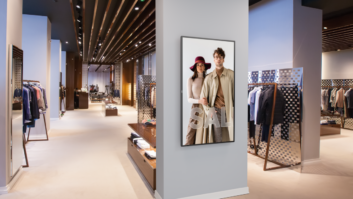TWICE:Where is the digitalSLRmarket headed? Has digital photography changed the demographic make-up of theSLRphotographer? Is the market broader now than in the 35mm era?
Lee: We certainly think so at Nikon. I think that the creativity of a digital SLR user has been enhanced since the film days, when they would try many different things, they’d shoot and then they would have to wait to see if their creativity worked or didn’t work. Today it’s instantaneous, it happens immediately. So you see a lot of guys, they take a picture and look at the back of the camera and say “ooh” — we call it “chimping.” So we think there’s a much bigger opportunity with digital SLRs than there was with film because of that instant gratification and the ability to create and look at the creativity and have an instant response and see what they’re doing and how it’s working.
Peck: The film SLR peaked in the mid-1980s, and then from the mid-1980s down it was just a downward spiral for almost 20 years. We talked earlier about the second- and third-generation digital camera buyers. They understand the limitations of point-and-shoot digital cameras, primarily shutter lag. Most lack the ability to put an extra flash on, or the focal length is not adequate for what they want. They recognize that SLR cameras can change lenses, you can add flashes, you can put more accessories onto it. There is no shutter lag. So soccer mom — who got dressed from her pajamas — wants the pictures of the kids in the action shot, not a split second after they kick the goal. So they’re very well aware of what an SLR camera can do and what a point-and-shoot camera can’t do.
I agree that the SLR market can certainly become much bigger than what the film SLR market was 20 years ago.
Hoffman: With the evolution of live view, consumers who did have a point-and-shoot digital camera who were used to seeing that LCD screen when they shoot, now have that option with the digital SLR. And that’s also going to be important as they migrate from what they’re used to now into the digital-SLR category.
Lee: I think another dynamic to it is that in the film days, a customer bought his camera back when he was in the Korean War and that camera worked forever. And now digital, the technology continues to evolve, so already we’re seeing second- and third-time buyers of digital SLR cameras. They’ve upgraded as the technology continues to drive forward.
Peck: David’s absolutely right. We have customers still using models they bought in 1976 and they work fine. There were not tremendous changes in technology in film cameras. Auto focus came, auto exposure came. But the time between those technology changes was years and years. Now you’re measuring this in months between these quantum leaps in technology.
Campbell: I think we agree that you’re going see more consumers moving into the digital SLR space than you did in the film SLR space. You know film, taking a good picture is very aspirational. People want to be able to take good pictures ultimately. And they want to make sure that they’ve got the right product to be able to do that.
Carr: The wild card that we see as we watch this industry is huge consumer electronic giants like Sony, Panasonic and Samsung entering the SLR category. That was reigned by the kings — Canon and Nikon. So it will be interesting to see what these new entrants are going to do to the pricing and features. It will be very interesting to watch that from the side.
Lee: We actually think that’s its going to be very positive because we think it will drive the industry. It’s more promotions. It’s no different than the consumer side of it. But there is a bigger price of entry and I think that’s an important thing to note. You have to have the system, the lenses, the accessories and you have to have the heritage.
TWICE:Can that stem the price erosion that you saw on the compact side, or at least slow it?
Peck: There may be fewer players. It may slow it, but I don’t think it’s going to stop it. The one thing that I’d like to add, what we see different for the digital SLR, particularly under $1,000, is the female buyer. If you look back 20 years to the film SLR, it was primarily a male market and we see very quickly that females are saying, “Hey, I can use a digital SLR.”
That’s a very important dynamic shift that we did not see with film SLRs. It was mostly male and is switching very quickly over to a female market. I don’t know if you see the same thing.
Lee: We actually saw it at the very end of film — the very, very end of film when we started offering a two-lens kit. All of a sudden the female customer, the soccer mom, they just really grabbed onto that and it’s continued in the digital SLR market once we got under $1,000.
Peck: Well I can tell you from my family I’ve lost shooting rights. I sit on the sidelines and watch the game, and let my wife take the pictures and that didn’t happen 10 years ago.
Hoffman: I think that about 20 percent of the total digital SLR business is women, and I think that’s going to continue to grow, and grow and grow especially with the advent of scrapbooking. They used to be the primary users of the camera but not necessarily the buyers of the technology, and I think that whole dynamic is starting to change where now women are more of a dynamic part of the purchase pattern of the product and not just an occasional user of it.
Campbell: I think again the shift in the technology from the point-and-shoot products to SLRs — like the live-view capability and image stabilization — it helps them get more comfortable and adapt more quickly to it. From the Panasonic perspective, we want to take all the technology we’ve had access to as we enter the d-SLR category. We’ve have image stabilization in our camcorders for 20, close to 30 years now. So it’s not like we don’t have an optical technology, an optical heritage to bring to the table and participate in the category.
We certainly think that there’s an opportunity to help grow it, as David had mentioned, as opposed to just coming in and drive pricing down and go after it from a different perspective. We understand the value.
Peck: There’s one important thing about SLR users — they’re photo enthusiasts. They take more pictures, they want to print more pictures, and they want to do more with the photo rather than just take a snapshot and pass it around the dinner table for everybody to look at. So the more we can move people from the point and shoot up to the digital SLR, we know that we can get them to buy more accessories, print more photos and do more with it.
Lundeen: In the retail sense there’s something in between, which is the fixed-lens, long-zoom, SLR-style digital cameras. At half the price of a digital SLR, it’s an interesting play for the woman in the category who wants a lot the operability of an SLR but who likes buying an optimized package that comes with a very high-quality lens that gives her a lot of zoom for the soccer field.
Carr: Agreed.












